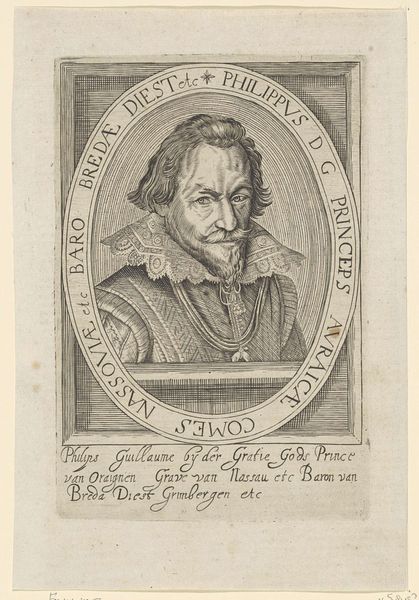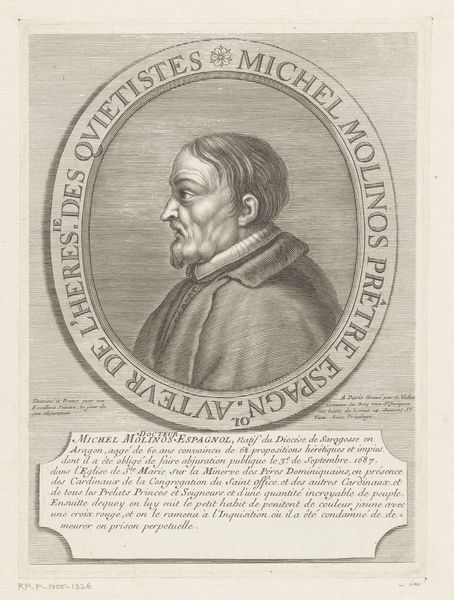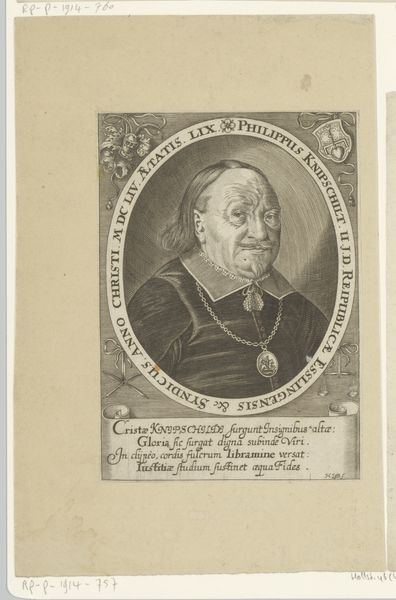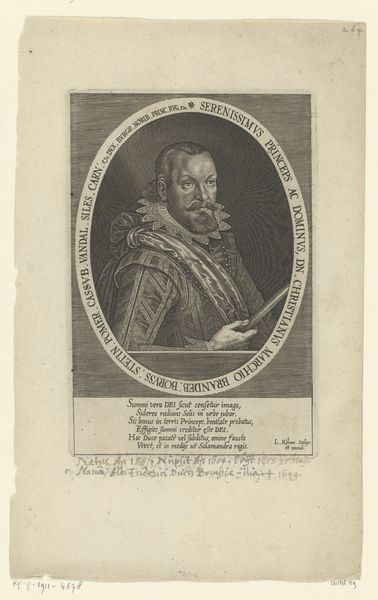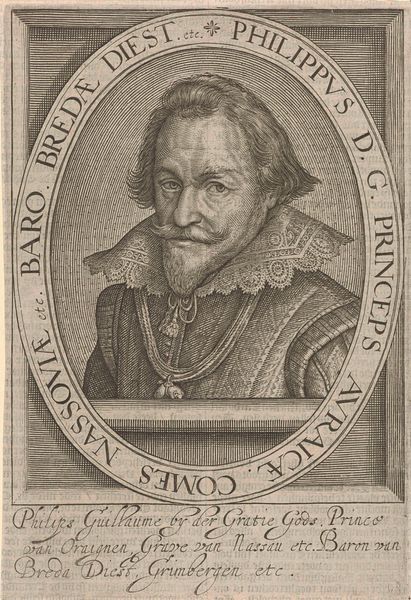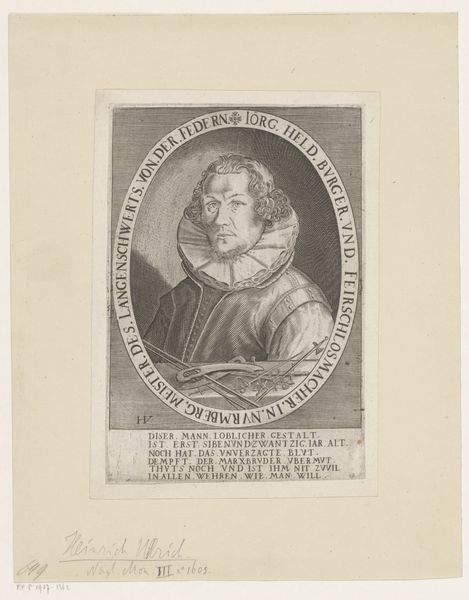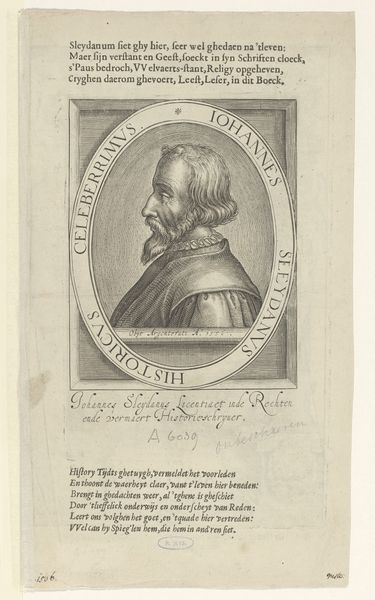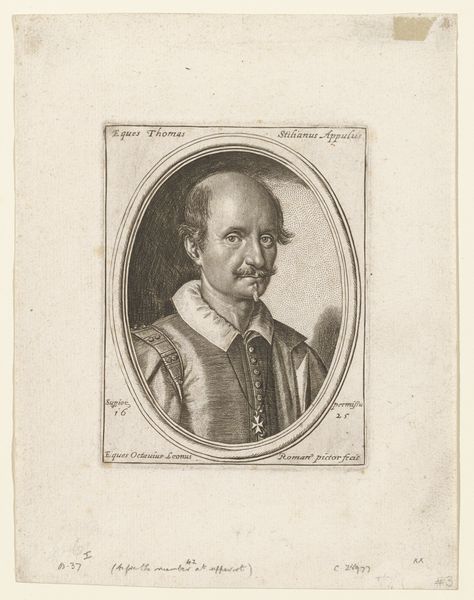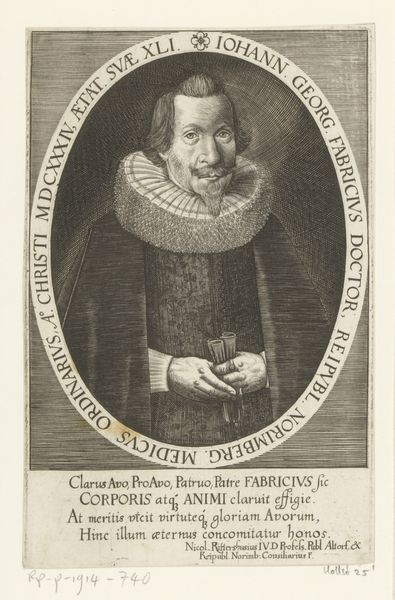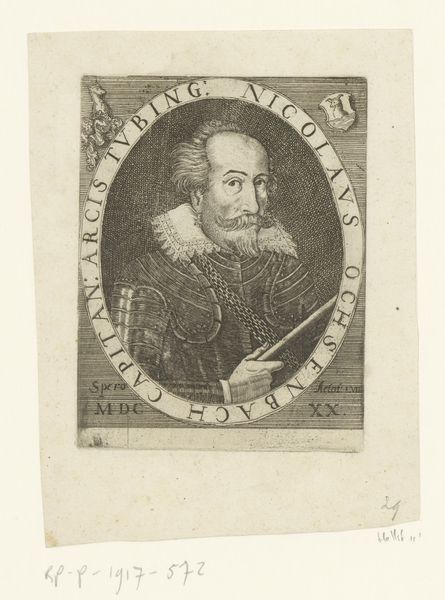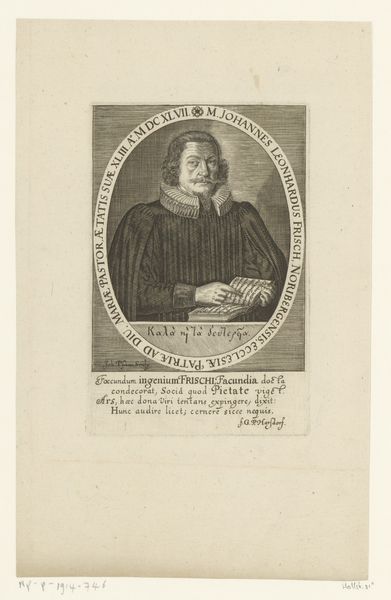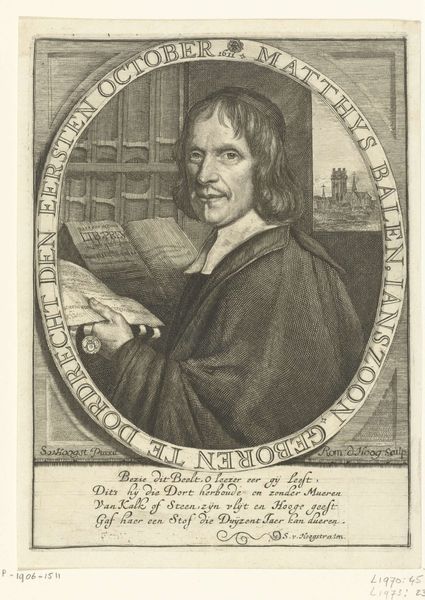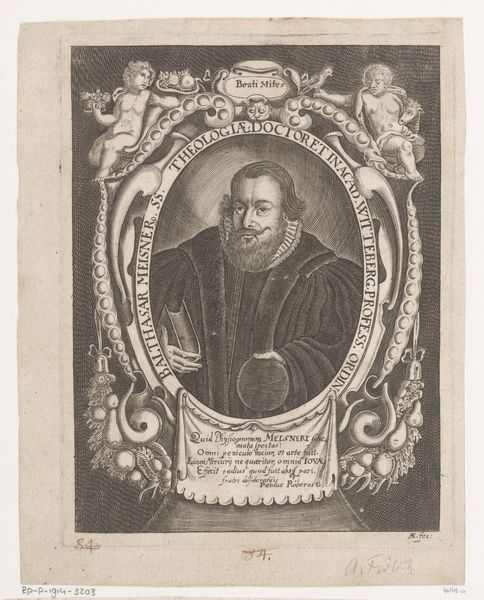
engraving
#
portrait
#
baroque
#
dutch-golden-age
#
old engraving style
#
figuration
#
line
#
engraving
Dimensions: height 186 mm, width 126 mm
Copyright: Rijks Museum: Open Domain
Curator: Before us, we have a 17th-century engraving from an anonymous artist, residing here at the Rijksmuseum, identified as "Portret van Filips Willem, prins van Oranje," or "Portrait of Philip William, Prince of Orange". Editor: The texture immediately strikes me—all these meticulously etched lines working together. It creates a somewhat stern yet distinguished presence. It seems almost tangible despite the two-dimensional medium. Curator: Indeed, the reliance on line is essential, almost Baroque in its detailed rendering of textures and forms. Notice how the artist utilizes varying densities of lines to articulate the play of light across his face, the ornate lace collar, and the plush fabric of his garments. It’s a showcase of refined technical skill, using the engraving medium. Editor: From my perspective, the material choices really bring forward the message of power. You can feel the labor—the time dedicated to crafting such intricate detail. Each line speaks volumes of not only skill but also of deliberate creation for an audience capable of understanding its implied wealth. And what message would this Philip want to give about his persona? Curator: That’s perceptive. The deliberate craftsmanship underscores Philip William's status, reflecting not merely wealth, but also the cultural and artistic capital of his time. The formal composition—the oval frame, the carefully arranged inscription—further emphasizes his elevated position in society, an assertion of princely authority communicated through visual language. Editor: I see that… the inscription surrounding the portrait essentially acts as a frame for this powerful image. In thinking about material conditions of production and reception, I keep circling back to how an engraving makes distribution and availability to larger audiences possible. Curator: Precisely, the relatively repeatable nature of engraving enabled wider dissemination of his image, solidifying his public persona and projecting power beyond his immediate circle. It encapsulates Baroque ideals of clarity and visual persuasion. Editor: Well, it has been such a great tour around the power of materials and visual message here, it gave me another perspective on how to decode portraits through lines, literally. Curator: Indeed. It is a beautiful demonstration of the intricate connections between artistic technique, social status, and visual representation during the Dutch Golden Age.
Comments
No comments
Be the first to comment and join the conversation on the ultimate creative platform.
